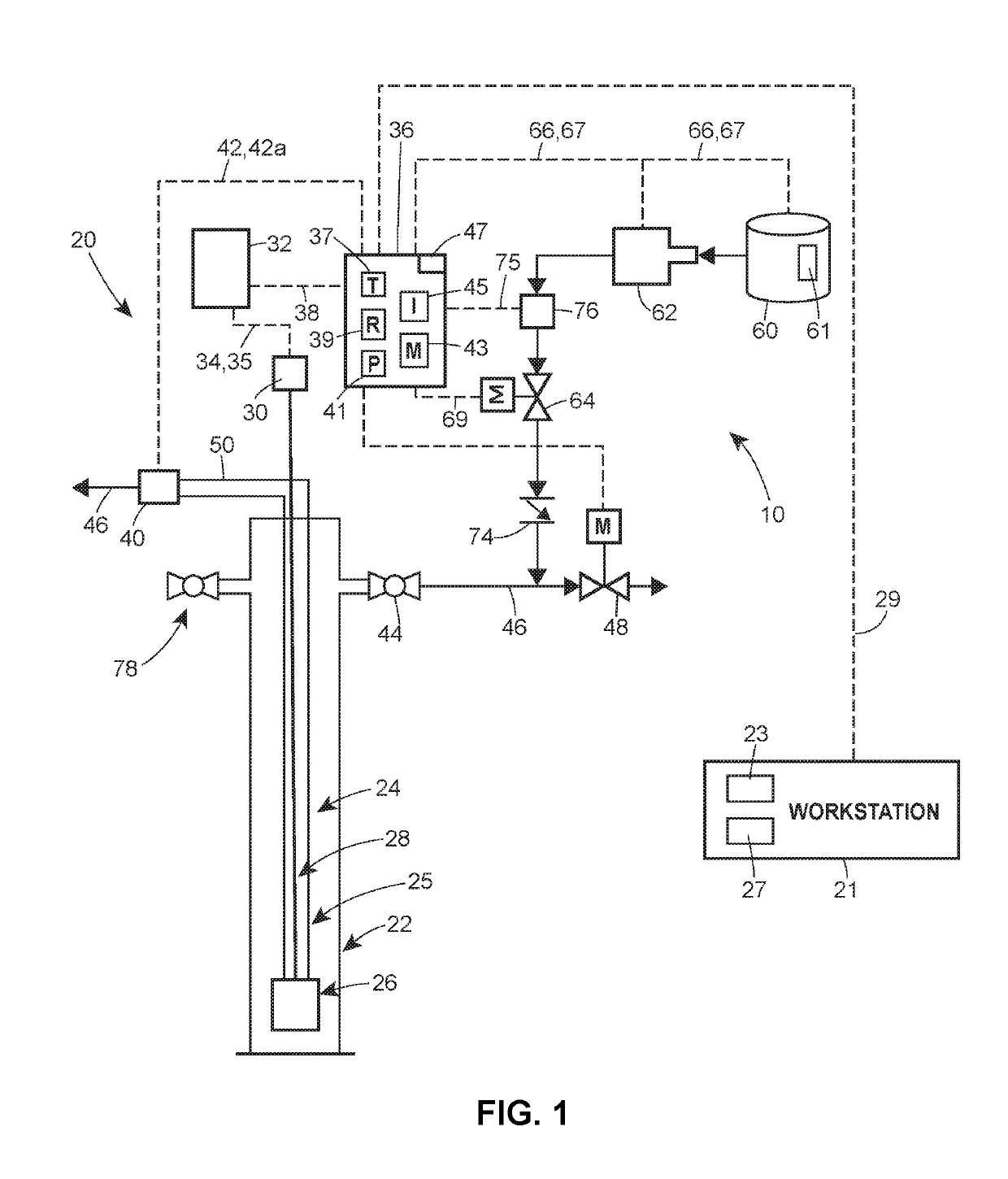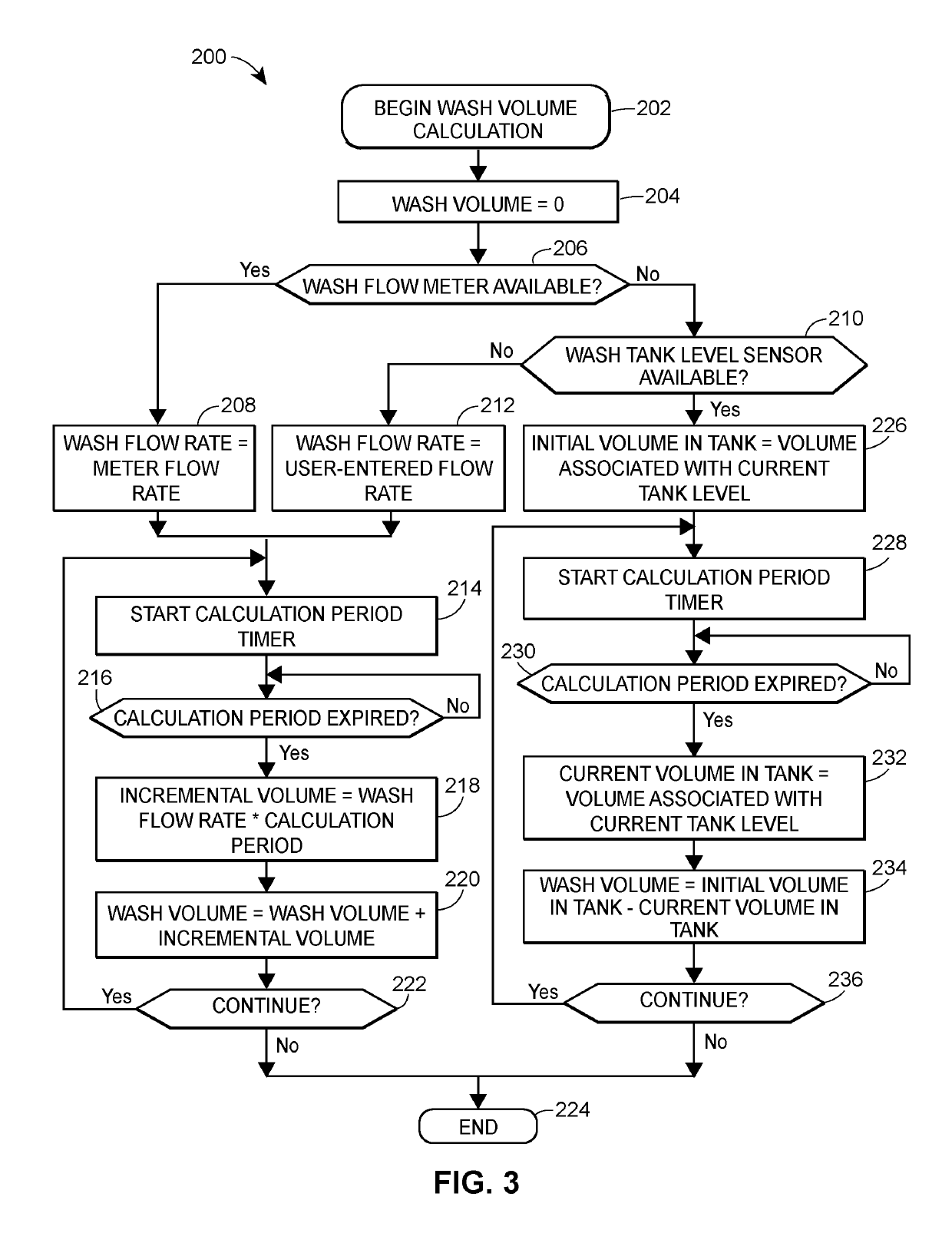Automated wash method for a progressing cavity pump system
a technology of automatic washing and cavity pump, which is applied in the direction of survey, instruments, borehole/well accessories, etc., can solve the problems of increasing the torque requirement of the pump, reducing the fluid velocity, and affecting the rotation of the eccentric rotor pin and the drive string of the sucker rod, so as to increase the speed of the pc pump
- Summary
- Abstract
- Description
- Claims
- Application Information
AI Technical Summary
Benefits of technology
Problems solved by technology
Method used
Image
Examples
Embodiment Construction
[0030]Generally, an automated wash system for use with a progressing cavity (PC) pump system is disclosed. The automated wash system includes a wash fluid source that is communicably and operatively coupled to a controller of the PC pump system, such that the wash fluid source is responsive to signals and / or commands from the controller. The automated wash system further includes a wash valve in fluid communication with the wash fluid source and an annulus of a well casing of the PC pump system. The wash valve controls the flow of wash fluid between the wash fluid source and the annulus. So configured, upon receipt of a command to initiate a wash cycle, the controller estimates an amount of wash fluid from the wash fluid source that has been injected into the annulus. The controller then automatically opens the wash valve to enable a preset amount of wash fluid from the wash fluid source to be directed into the annulus, and increases a speed of the PC pump via a signal to a motor op...
PUM
 Login to View More
Login to View More Abstract
Description
Claims
Application Information
 Login to View More
Login to View More - R&D
- Intellectual Property
- Life Sciences
- Materials
- Tech Scout
- Unparalleled Data Quality
- Higher Quality Content
- 60% Fewer Hallucinations
Browse by: Latest US Patents, China's latest patents, Technical Efficacy Thesaurus, Application Domain, Technology Topic, Popular Technical Reports.
© 2025 PatSnap. All rights reserved.Legal|Privacy policy|Modern Slavery Act Transparency Statement|Sitemap|About US| Contact US: help@patsnap.com



